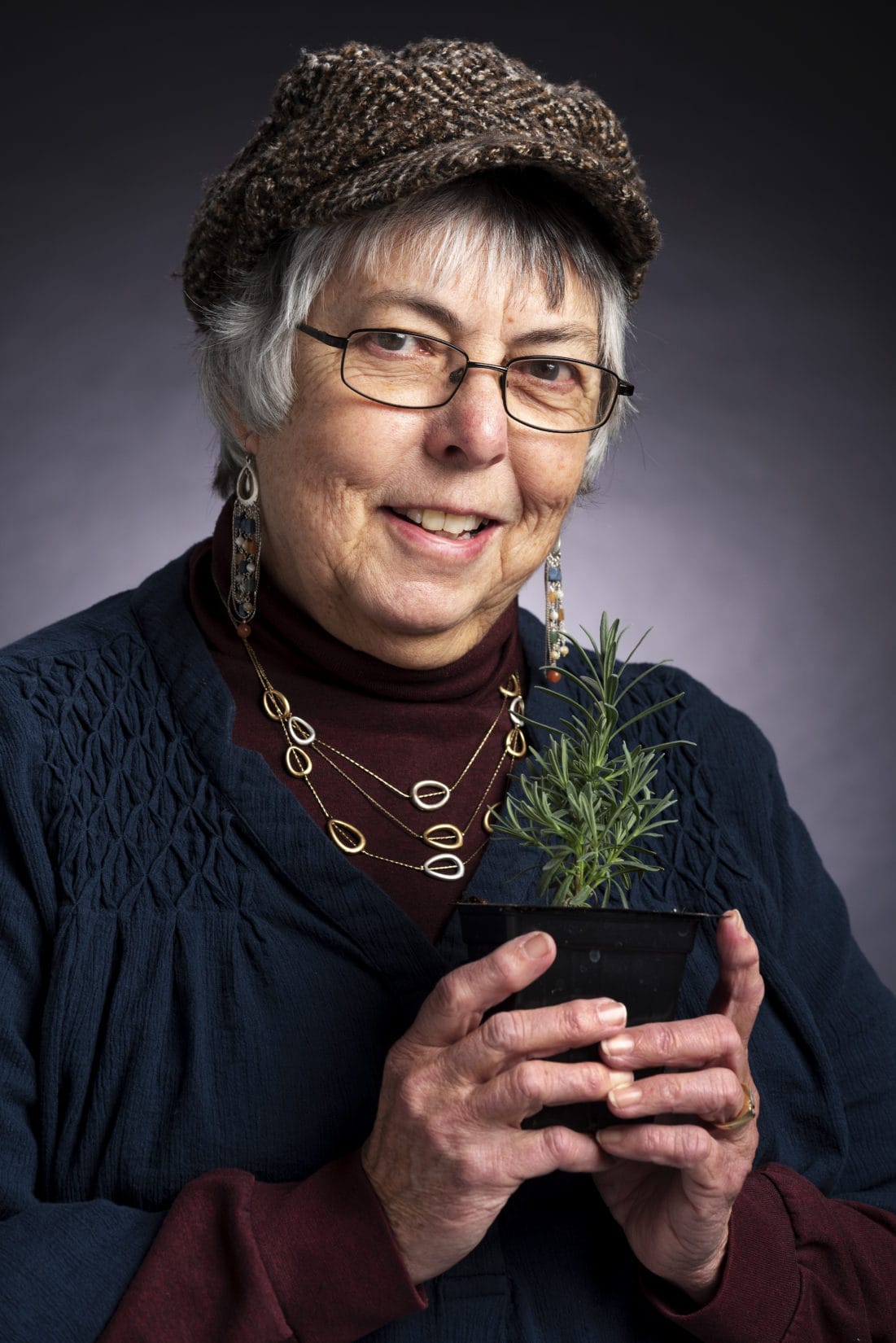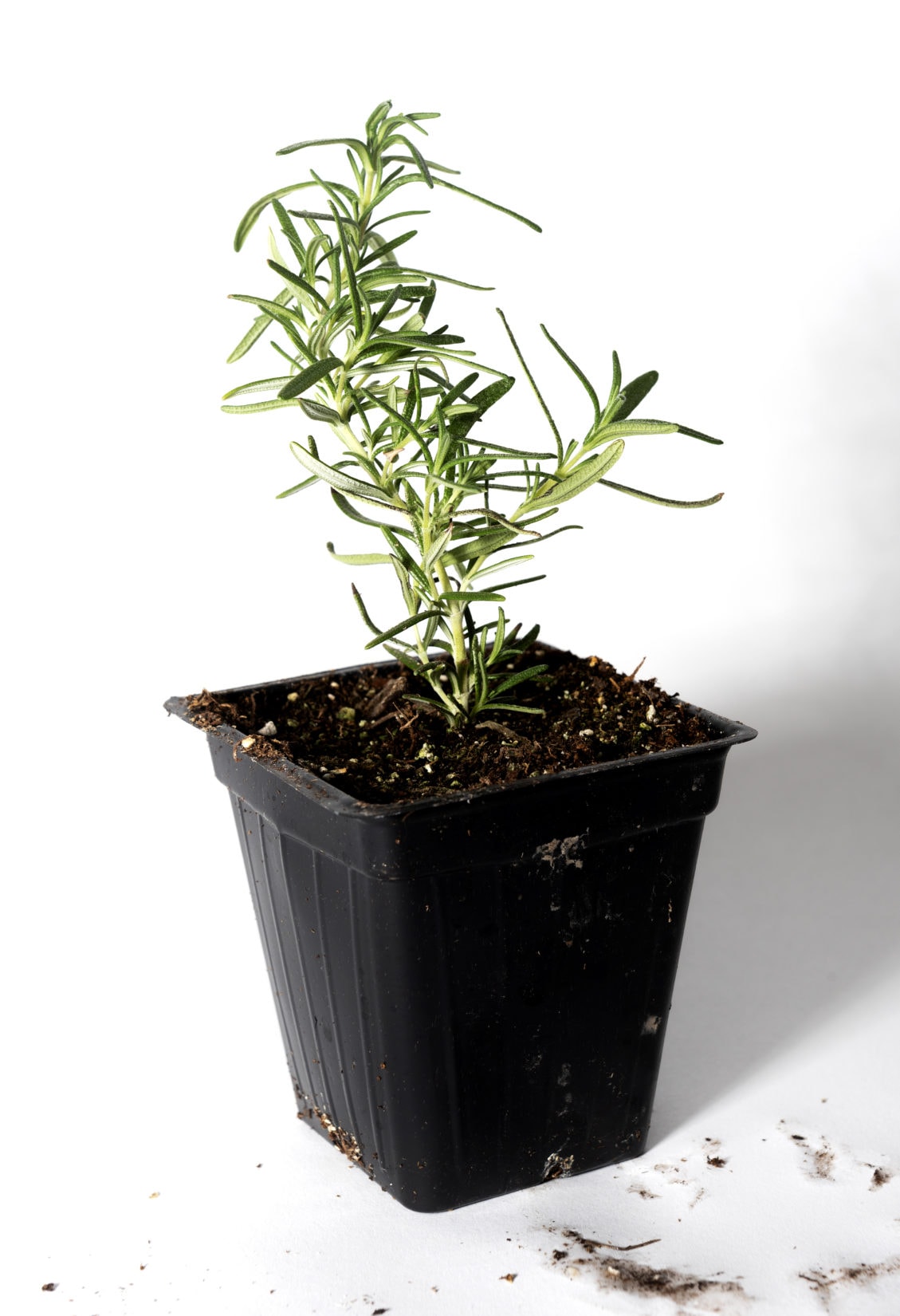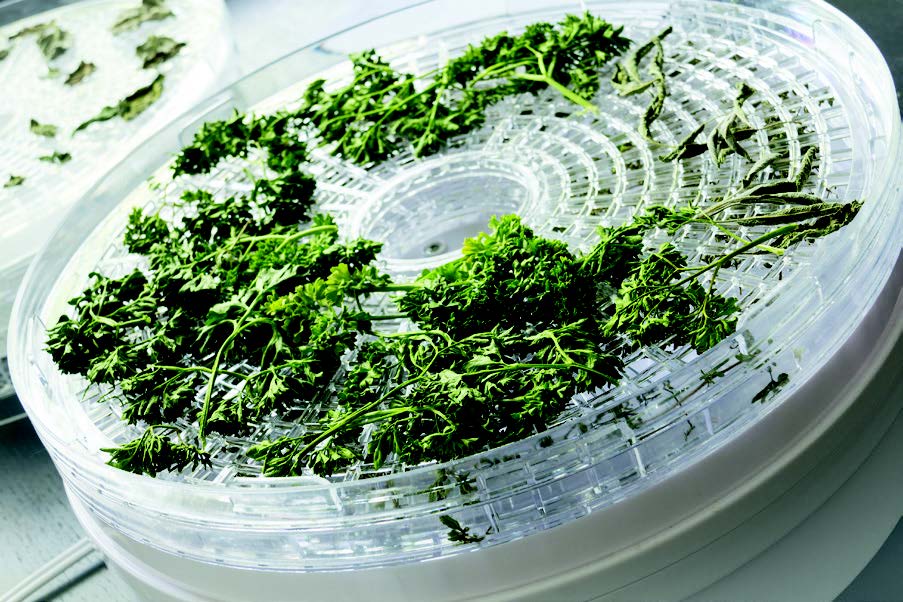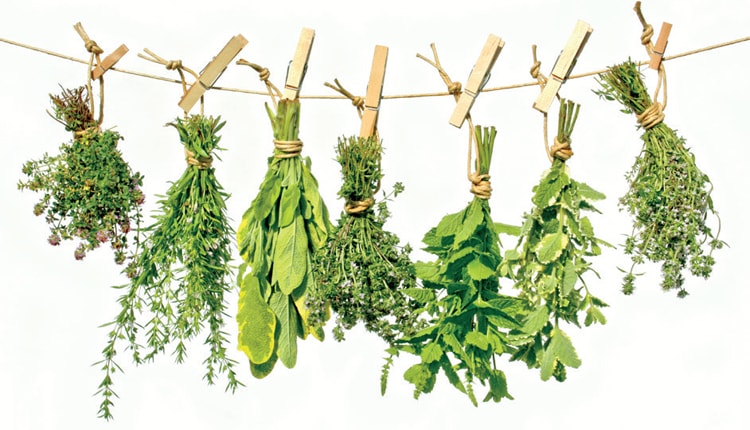An herb’s essence is a powerful thing: The scent of thyme can transport a hungry Midwesterner to the Mediterranean; one whiff of cilantro might send another to the tropics. Herbs’ power extends well beyond the dinner table, but most people use them for cooking, either dried or fresh, home-grown or bought from a local grocery or farmers market. If you’re one of those people who buy herbs, have you ever thought about growing them yourself? With the outdoor growing season around the corner, this article might plant the seeds of inspiration to do just that — in your own little corner of paradise.

Dorothy Canote, a lifelong naturalist, is a local herb expert who operates a hoop house in Harrisburg, where she grows herbs that she sells at the Columbia Farmers Market under the vendor name Harvester. She sells year-round — fresh herbs in summer and dried ones in the winter.
First Things First
Canote says the first consideration when thinking about growing herbs should be what you want to do with those herbs. “Are they using it for cooking? For cosmetic purposes? Or are they using it for medicinal purposes?” It’s no accident that the thing that makes herbs perfect for seasoning is the same thing that makes them great for other uses. Canote says she has some customers at the market who use herbs for their medicinal properties and ask for certain ones, although she doesn’t actively recommend things. “Feverfew has traditional use for colds and sore throats and is often used for chronic migraines. Lemon balm is a very potent antiviral, and thyme, rosemary and oregano are also very potent anti-microbials. The active ingredients that evolved in herb plants evolved because the plants were finding a natural way to resist disease and to keep insects and other things from eating them,” she explains. “These properties carry over into the food they season and benefit us even if we aren’t aware of the fact.”
There is currently a resurgence of interest in herbal medicine. Therapeutic uses can include a range of effects, although many of these are more subtle than modern pharmaceuticals and should be used under the care of an experienced, credentialed herbalist. There are also many herbs used in cosmetic preparations, which are safer to use because they are applied to the skin rather than being consumed. The use of herbs for aromatherapy is also popular.
Know Before You Grow
Once the herbs’ purpose has been established, Canote says, your next step should be to self-educate. She says there is a wealth of resources available, online or in books, where you can find plenty of information from experienced food experts — chefs, cooks, etc. who can tell you how to cook with herbs. Rosemary Gladstar, whom Canote describes as “the quintessential herbalist,” is one of her favorites. “She’s known worldwide and has been in this a long time,” she says. For medicinal herbal information, Canote recommends author David Hoffman.
Avoiding the Path to Pathogens
There are a number of ways to prepare herbs to be added to food dishes. Because the active ingredients responsible for flavor are generally not water-soluble, a carrier or solvent can be used to extract the herbal “essence.” These include alcohol (for tinctures or to make bitters) and vinegar or oil for dressings. Canote says if you’re thinking of making an herbal-infused oil using fresh herbs, there’s a potential for a botulism problem to arise. “When they’re in oil, there’s no access to air. If the herb is fresh, there may be moisture, and if there are pathogens present that don’t like oxygen, that’s when you get in trouble.” She says it’s advisable to use dry herbs. “Not that you can’t use fresh herbs, you can — if you’re careful and if they’re clean. Where did you get your herbs? Are they grown in your garden? Do you use any kind of fertilizer? If it is from animal sources, there’s a possibility of E. coli present.”
Canote says it’s safer to skip oil and use vinegars instead. “Vinegar is acidic and is very good at extracting the flavor-ful components of herbs,” she says. “Tarragon, rosemary, thyme and many other herbs can be put in a vinegar, and it does not support the growth of pathogens. And it gives the vinaigrette aspect, as well. Apple cider vinegar is healthful in and of itself, and there are other kinds of wine vinegars whose flavors add to the taste of the prepared dish. White distilled vinegar should not be used for culinary purposes.”

Herbs can also be prepared and preserved as a tincture, which is a solution in alcohol. Any kind of consumable alcohol (not rubbing alcohol!) can be used, Canote says — vodka, Everclear®, gin — and those who wish to avoid alcohol can use glycerine, or a water/sugar simple syrup.
Picking Your Perfect Plants
The type of herbs you decide to grow will depend on your intended use, and perhaps also on your space. Will you have an actual herb garden, or are you growing your herbs in containers?
When it comes to culinary herbs, individual taste preferences come into play. Many people enjoy growing annuals such as basil, dill and cilantro. Parsley, which is a biennial, is usually planted every year because it tends to bolt (go to flower) the second year. Canote says the annual sweet marjoram is a wonderful herb that doesn’t get much recognition: “People use regular marjoram, but it’s a perennial, like oregano, which will often overwinter. Sweet marjoram has a wonderful fragrance and flavor, but most people don’t know about it.”
According to Strawberry Hill Farms, in most cases you can plant herb seeds outdoors here mid-April or after. If you prefer using starter plants, plant those after the last frost-free date, which is May 10 in mid-Missouri.
Then there are the popular perennial herb options. “There’s a dedicated group who have their own herb gardens and grow their own perennial herbs,” Canote says. “They’re not hard to grow. They’re easy to grow in pots, too. They do have some peculiarities: The Mediterranean herbs like rosemary, sage, thyme and oregano love dry, hot weather and love full sun. Most people simply kill them by overwatering. If the roots are waterlogged and the soil’s not drained, they die.” Mint is another popular pick, although it can be invasive and should be grown in pots. A variety of mints can be used.
Of the better-known herbs, Canote says almost all grow well in Missouri. “There are not very many that you can’t grow. The tender perennials like lemon-grass, lemon verbena and stevia, that will overwinter farther south, have to be re-planted every year in Missouri.”
Keeping Things Growing
Canote says the best way to maintain herbs is to use them — to cut them back. “That takes away any tendency of getting ‘leggy’ and flopping over and going to flower,” she says. “Once they flower, they begin to senesce (get old) and they don’t have the good culinary properties or the medicinal properties.”
The time of day when you harvest your herbs also is important. Harvest in the morning after the dew has gone and before the sun gets too hot. The heat causes the oils to evaporate from the leaves, weakening their smell and flavor.
“If you are new to the use of herbs, it’s best to start with an easy recipe and only grow and use a few herbs, to be sure you and your family like them,” Canote says. “It won’t take long until herbs become an indispensable part of your life.”
Drying Decisions
There are four possible ways to dry your fresh herbs. Some take longer or require the use of special equipment, but all will work:

Air Drying
Bundle a bunch of whole herbs (about 1 inch in diameter) with a rubber band and hang them upside down for a week. Once all the moisture is gone, crumble the dried leaves. Or pluck the leaves off the stems and lay them on a rack or tray in a clean, non-windy spot for a week, then crumble.

Microwave
Separate the leaves from the stems and wash the parts you want to save. Once they’re no longer wet, microwave them between two paper towels for one minute. Check and see whether they’re dried out. If not, continue to nuke them in 30-second intervals until sufficiently dry. Crumble.

Home Dehydrator
Make sure the leaves are clean and undamaged and then put them in a single layer on each tray of your dehydrator. Cook at the lowest setting for approximately two to four hours, then crumble.

Oven
Lay the plucked leaves on muslin or cheesecloth so they won’t stick to your baking pan. Silicone mats also work well. Set your oven on the lowest setting and “bake” for around 30 minutes. When the leaves crumble easily and there’s no pull when you try to tear them, they’re done.


